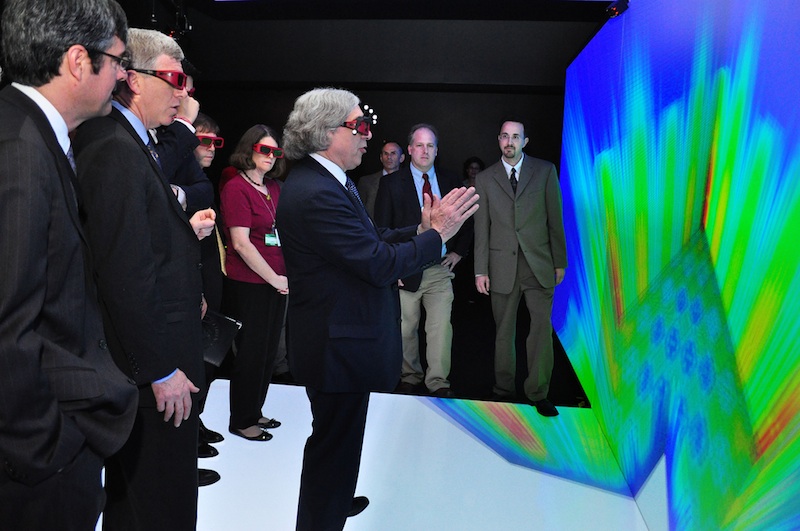U.S., Russia agree joint nuclear development


While the United States dithers over the future of nuclear power, Russia is banking on it. Nuclear will provide up to half of the country's electricity by 2050 in large measure from a type of reactor under development called a "fast reactor."
Now it looks like the U.S., under new Energy Secretary Ernest Moniz, wants in on the Russian work.
The two countries this week signed a broad cooperative nuclear development agreement that potentially gives the U.S. access to a Russian state research reactor called the BOR-60 in Dimitrovgrad, the U.S. Department of Energy announced.
Russia uses the BOR-60 to test fast reactor technology. Unlike today's reactors, which slow down neutrons, fast reactors allow them to run fast. They leave much less waste and can potentially breed new fuel. Critics say they are dangerous.
The agreement, signed by Moniz, also proposes a joint research center called the Multi-Purpose Fast Research Reactor International Research Center.
The U.S. curtailed its own fast reactor program in 1994, when President Bill Clinton shut down the Experimental Breeder Reactor II (EBR II) at what was then called Argonne National Laboratory-West (now Idaho National Laboratory).
Private developers of fast reactors in the U.S. include General Atomics as well as Bill Gates' TerraPower. GE Hitachi has developed one called PRISM, based on the EBR II. British entrepreneur Richard Branson has endorsed them in a letter to President Barack Obama.
The U.S.-Russian nuclear agreement spans areas beyond nuclear power. It includes the development of nuclear technology to help bust up asteroids that threaten to slam into Earth. Moniz noted:
“This Agreement supports President Obama’s nonproliferation and climate priorities by providing a venue for scientific collaboration and relationship-building between the U.S. and Russian research and technical communities. Jointly, these communities will work to further develop advanced technologies that can address some of our most pressing nuclear energy and nuclear security challenges.”
The DOE press release described the two countries as "equal partners...with each country bearing its own costs."
Russia could derive 80 percent of its electricity from nuclear by the end of the century, according to the World Nuclear Association. It is throwing $32 billion at nuclear research over the next two years alone. The U.S. commitment is far less.
Photo from Lynn Freeny, U.S. Department of Energy via Flickr
A different type of different reactor:
More fast reactors and Russian nuclear:
- Novel nuclear reactors atop MIT contest finalists
- Bill Gates stops chasing nuclear ‘wave’, pursues variety of reactor types
- Rebranding Pandora: Film by Oscar-nominated director show nuclear is the way
- Russia plowing $32 billion into nuclear over next two years
- Grandfather of global warming fight: Nuclear power saves millions of lives
- Lights! Camera! Atoms! Sundance to debut pro-nuclear film
- Virgin Nuclear? Branson asks Obama for reactor help. Sir Richard v Bill Gates?
- From Fukushima's home country: Nuclear will double
For all sorts of alternative nuclear stories including thorium, molten salt, pebble beds, fast reactors, modular reactors, fusion and more, click here.
This post was originally published on Smartplanet.com